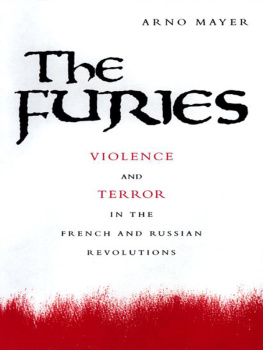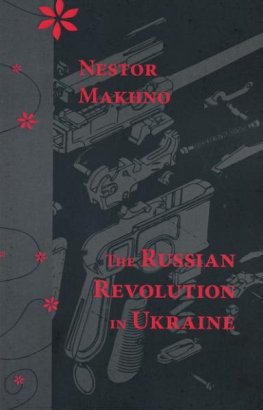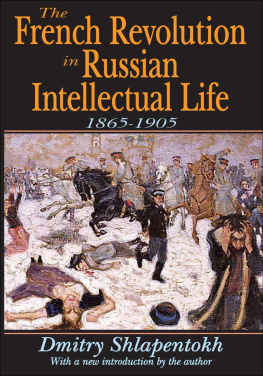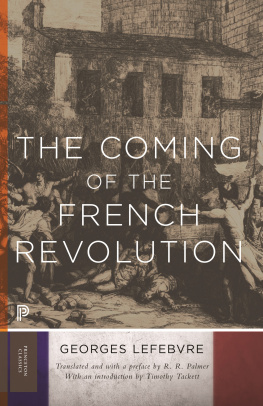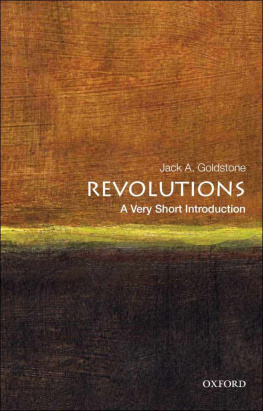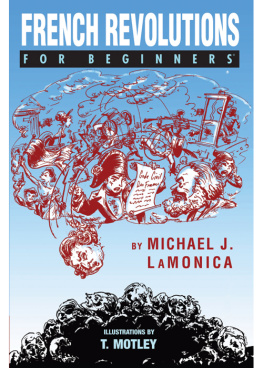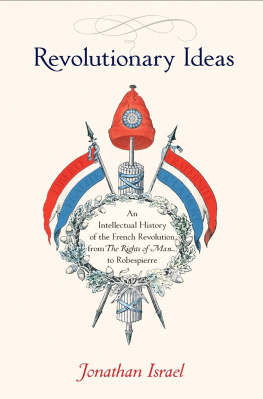
THE FURIES
ARNO J. MAYER
The Furies
Violence and Terror in the French and Russian Revolutions

PRINCETON UNIVERSITY PRESS
PRINCETON, NEW JERSEY
Copyright 2000 by Princeton University Press
Published by Princeton University Press, 41 William Street, Princeton, New Jersey 08540
In the United Kingdom: Princeton University Press Chichester, West Sussex
All Rights Reserved
Library of Congress Cataloging-in-Publication Data
Mayer, Arno J.
The furies : violence and terror in the French and Russian Revolutions / Arno J. Mayer.
p. cm.
Includes bibliographical references and index.
ISBN 0-691-04897-5 (cl : alk. paper)
1. FranceHistoryRevolution, 17891799Influence 2. Soviet UnionHistoryRevolution, 19171921Influence. 3. Political violenceFrance. 4. Political violenceSoviet Union. 5. FranceHistoryReign of Terror, 17931794. 6. TerrorSoviet Union. I. Title.
DC183.5 .M35 2000
944.04dc21 99-059145
This book has been composed in Galliard
The paper used in this publication meets
the minimum requirements of
ANSI/NISO Z39.48-1992 (R1997)
(Permanence of Paper)
http://pup.princeton.edu
Printed in the United States of America
1 3 5 7 9 10 8 6 4 2
ALSO BY ARNO J. MAYER
Why Did the Heavens Not Darken? The Final Solution in History
The Persistence of the Old Regime: Europe to the Great War
Dynamics of Counterrevolution in Europe, 18701956
Politics and Diplomacy of Peacemaking: Containment and Counterrevolution at Versailles, 19181919
Political Origins of the New Diplomacy, 19171918
To Ruth
Of all the passions, hatred of the ancien rgime was paramount. No matter how much people suffered and trembled, they always considered the hazards of a return to the old order worse than all the pains and vicissitudes of their day and age.
Alexis de Tocqueville
The task to be accomplished is not the conservation of the past, but the redemption of the hopes of the past.
Max Horkheimer and Theodor W. Adorno
THE FURIES
CONTENTS

PREFACE

THIS BOOK, like any historical work, has a history, and it was crafted in a specific political and historiographic context. In 1987, I finished Why Did the Heavens Not Darken? and resumed work on the sequel to The Persistence of the Old Regime, which I had put aside to ponder and search into the Judeocide. But a turbulence in the surrounding political and intellectual atmosphere distracted me.
I spent much time in France in 198790, the years of the rites of the bicentennial of the French Revolution, in which historians were prominent officiants. There was nothing exceptional about French historians, particularly the public intellectuals among them, playing their self-assigned roles. They had been doing so practically ever since 1789, taking three distinct positions: abjure and excoriate the Revolution, root and branch; redeem the revolution without a revolution over against the radical revolution of the Terror; exalt and justify the Revolution, en bloc. There is something archetypal about these three positions: since 1917 they have defined the debates about the Russian Revolution, except that the third position eventually split in two over the question of the continuity or break between Lenin and Stalin.
The crescendo of violence (Jules Michelet) has been the single most important defining issue of the indomitable debate about the Great Revolution. For the bicentennial, French historians reenacted the tried and true battle between the prosecutors who blame one or more ideologically driven political leaders for the spiraling Furies, including the Terror, and the defenders who attribute them to the force of circumstance. Indeed, it seemed as if old polemical wine was being poured into new historiographic bottles.
Presently, however, the bicentennial debate became singularly polemical and impassioned. In part this was so because as may be expected, it served as a screen for heated arguments about Frances unmastered recent past. Had Vichy been the last stand of the counterrevolution dating from 1789, shielded by Nazi Germany? Had the French Communists, since the 1930s, been nothing but latter-day Jacobins, subservient to Soviet Russia? Not unrelated, the great historical ventilation was marked by the changing Zeitgeist which, in turn, it helped to shape. Because or in spite of the return of the tempered left to power in France in 1981, there was a vigorous resurgence of the far right and of traditional conservatism. This political and intellectual mutation coincided with the ascendancy of Ronald Reagan and Margaret Thatcher, along with their neoconservative clerks, in the United States and Great Britain, as well as with the breakthrough of glasnost and perestroika in East Central Europe and Russia. Simultaneously, academic Marxism was going out with the tide.
This was the context in which ultraconservative historians resurfaced to revive and update their position: they argued that in addition to being an inexpiable sin, the French Revolution was the ultimate source of all the purgatorial fires of the twentieth century. No doubt these latter-day counterrevolutionaries would have remained inconsequential had they not found soul mates, not to say fellow travelers, among moderate conservatives and new-model liberal democrats. Among them in particular the ex-Communist renegades, who by European standards carried disproportionate weight in the Parisian intelligentsia, became vital intermediaries: even if unintentionally, they legitimated the resurgent die-hard position and its champions, and made them salonfhig in the 6th and 7th arrondissements. Georg Simmel, founder of formal sociology, incisively conceived renegades to be sworn to a distinctive loyalty because rather than naively grow into a new political, religious, or other party, they join it after having broken with a previous one, which never ceases to repel and incense them.
The inverted true-believers took two successive steps to concretize the charge of the right-wing resurgence, in the process emerging as its chief and emblematic voice. First, they postulated the essential sameness of the ultimate causes and inner workings of the crescendo of violence of the French and Russian revolutions: Robespierre, Rousseau, and the Great Terror were said to be all but analogous with Lenin/Stalin, Marx, and the Gulag. They read the Jacobin Terror by the light of the Bolshevik Terror at the same time that they asserted that the rule of fear and blood of 179394 had been the dress rehearsal and portent for that of 191789.
Their second step was to stretch the analogic fabric to comprise the Third Reich. The Soviet and Nazi regimes were deemed to be fundamentally if not wholly identical: both were variants of the same totalitarianism, whose philosophic roots reached back to the Jacobin moment. Whatever the dissimilarities between the two regimesthere was no Soviet equivalent for Nazisms genocidal racismthey were outweighed not only by the likenesses of their structures and methods of domination but also by the purpose of their murderous Furies. Compared to the line of descent from the Jacobin to the Bolshevik terror, that between the Bolshevik and Nazi terrors was not only immediate but material: by virtue of their chronological head start the Cheka/KGB and the Gulag presumably served as models for the SS state and concentration camps which Hitler set up to better fight Bolshevism at home and abroad. The ground was being seeded for the rehabilitation and justification of the anti-Communist warrant of Fascism and National Socialism, including of Vichy Frances national revolution.
Next page
